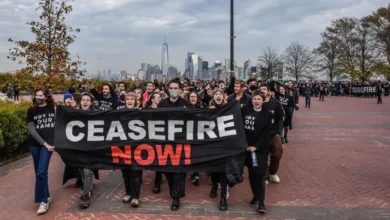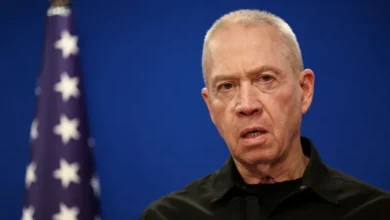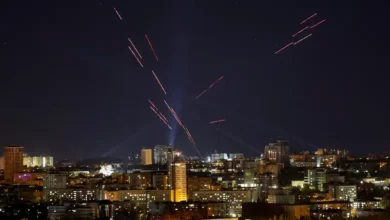Report reveals new details on Israel’s assassination of Hezbollah’s Nasrallah

A report published on Sunday has revealed new information about the assassination of former Hezbollah Secretary-General Hassan Nasrallah, disclosing that Israeli intelligence received detailed reports on his location and movements days before the operation.
According to the report by Asharq Al-Awsat, the high-level decision to eliminate Nasrallah culminated in 14 airstrikes targeting the buildings he entered, including all possible escape routes. The strikes continued for several days to prevent rescue operations for Nasrallah and his entourage.
According to the report, Israeli security sources confirmed that the hunt for Nasrallah began after the 2006 war, spearheaded by Military Intelligence (“Aman”) and the Mossad. However, the political decision to act was postponed until the right moment presented itself. The operation gained momentum when Nasrallah pledged support for Hamas in its war with Israel following the October 7, 2023 attack.
The report said that Israeli forces employed a strategy of deception to make Nasrallah believe that Israel had no intention of escalating the conflict. Both Hezbollah and Israel maintained limited engagement, signaling to each other that neither side intended to fully deploy their military capabilities. This approach led Nasrallah to lower his defenses.
The escalation was triggered on September 16, 2024, following the failure of US envoy Amos Hochstein’s mediation efforts to convince Hezbollah to cease its attack on Isreal, which the Lebanese group said it was carrying out in support of Gaza. After Hezbollah rejected Israel’s demand to disengage from the conflict, Israeli Prime Minister Benjamin Netanyahu and his defense minister at the time, Yoav Gallant, said that Israeli residents in the north could only return following a ground invasion of Lebanon.
On September 17, Israel’s security cabinet approved the invasion and implemented a communication disruption plan, detonating pager and wireless devices.
In response, Nasrallah delivered a speech on September 19, saying that the fighting would not cease unless Israel ended its campaign in Gaza. Israel cited this as grounds for a massive escalation, culminating in a ground invasion in early October.
The intelligence operation leading to Nasrallah’s assassination spanned 18 years and involved detailed surveillance of Hezbollah’s leadership, from top commanders to local unit leaders.
Israeli operatives tracked Nasrallah’s movements step by step. Days before the strike, Israeli military intelligence pinpointed his exact location within a complex beneath a residential area in southern Beirut comprised of 20 interconnected buildings. This discovery was deemed a rare, once-in-a-lifetime opportunity.
The final plan, according to Asharq Al-Awsat, was overseen by Chief of Staff Herzi Halevi, with Prime Minister Netanyahu personally attending the final briefing. A fleet of 14 fighter jets armed with 80 tons of munitions was prepared. The operation was executed at 6:21 p.m. during evening prayers.
In just 10 seconds, the buildings collapsed, leaving a massive crater at the site. All potential exits were bombarded to eliminate any chance of escape. The strikes continued for several days to obstruct Lebanese emergency and rescue efforts.
Military correspondent Amir Bohbot noted that Nasrallah failed to interpret the escalating strikes as a warning. “Nasrallah, who prides himself on understanding Israel’s strategies, became overconfident,” Bohbot said, adding that Israeli intelligence’s strategy of misleading Nasrallah reinforced his belief that he was not a target.
Nasrallah, who had led Iran-backed Hezbollah for 32 years, was killed on September 27, 2023 when a series of Israeli airstrikes flattened several buildings in Beirut’s southern suburbs.









